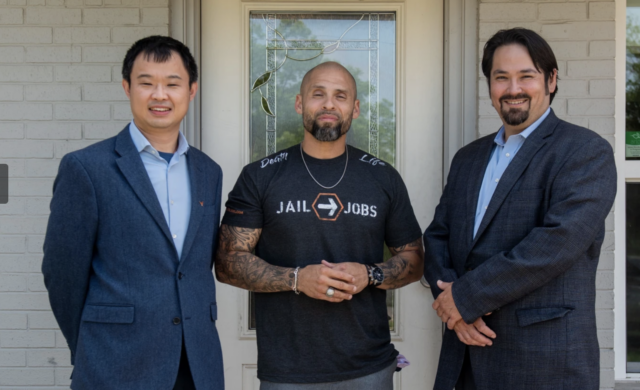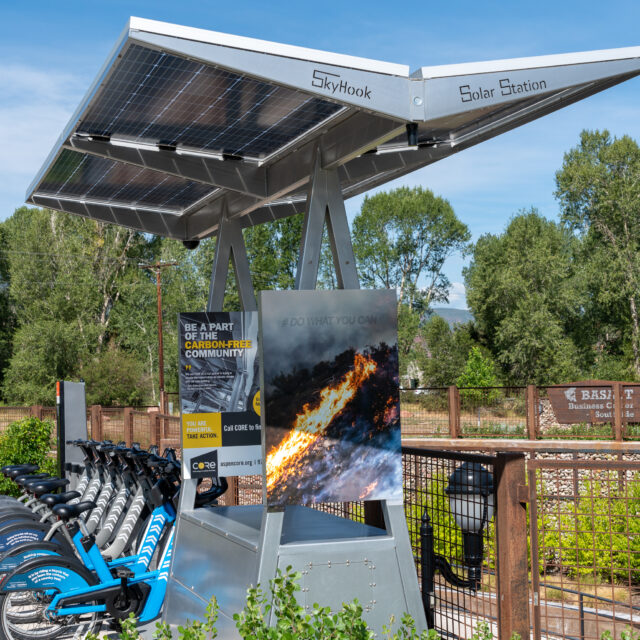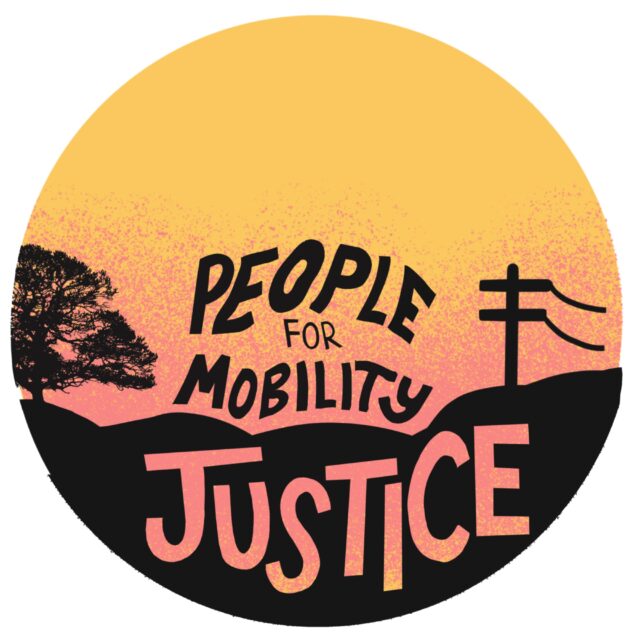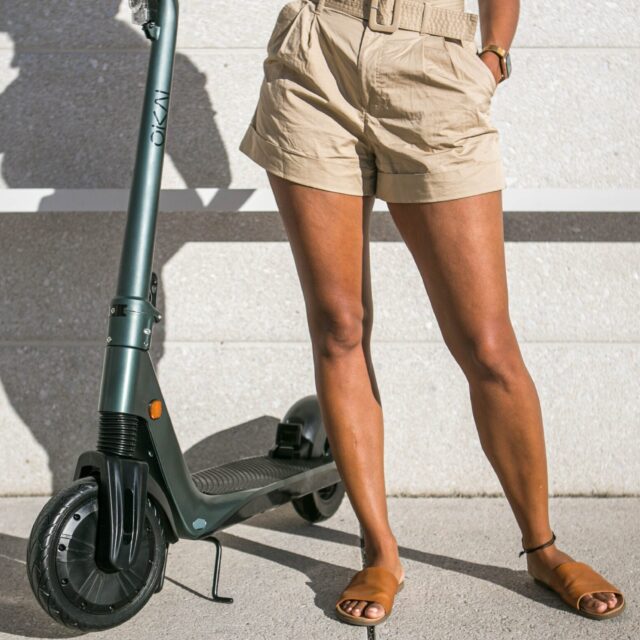A Solar-Powered ‘Mobility Hub’ Is Coming to Austin
by Kiran Herbert, Communications Manager
October 11, 2021
A $1 million grant will help bring bike share, e-scooters, free WiFI, a mobile health clinic and a food pantry to a neighborhood that’s 70% Latino and 42% transit-dependent.

Researchers from the University of Texas at Austin—including Professor Jungfeng Jiao (left)—will partner with the nonprofit Jail to Jobs and the Austin Transportation Department on a new mobility hub.
Junfeng Jiao first coined the term “transit desert” in 2012. Jiao, an associate professor at the University of Texas at Austin School of Architecture, describes these “deserts” as urban islands—often made up of low-income and minority communities—surrounded by highways. In a transit desert, there’s more demand for transportation than what’s currently available.
“This is not something that’s unique to Austin—there are many, many, many transit deserts across the U.S., and in Europe and Asia too,” says Jiao, whose own research has identified transit deserts in all major U.S. metropolitan areas. “Most of these neighborhoods have to rely on public transportation to get around but there’s not so much infrastructure available.”
Through research Jiao and his team were doing locally, a trend emerged: People living in transit deserts often had to commute an hour or more to get to work, a job imbalance from which wealthier, whiter citizens were often exempt. In the two years since noting that disparity, Jiao and his colleagues—which include public affairs, information, and economics faculty members—identified a smart mobility hub as a possible solution. In 2020, the “mobility hub” was awarded a $50,000 grant from the National Science Foundation Civic Innovation Challenge and invited to submit a proposal for a $1 million round. Last month, the team successfully secured that funding, too.
At its core, the project is data-driven, having identified the Georgian Acres neighborhood of Austin as a representative launchpad based on travel patterns, mobility infrastructure including bus and bicycle routes, and demographic data. The 8,895-person neighborhood is more than 70% Latino and 10% Black, with about 16% of residents living below the poverty line and 42% dependent on alternative transportation, such as transit or walking. Georgian Acres is also surrounded by highways I-35, US-183 and TX-275, and commute times for residents are 67% longer than Austin’s average.
Notably, the project is also community-driven: After receiving its first round of funding, the team reached out to residents in the Georgian Acres neighborhood to gauge interest and solicit ideas.
“We asked what they wanted to see in their community, rather than telling them what we planned to build,” says Jiao. “We wanted to make sure the hub was customized to meet their specific needs.”
The result was a mobility hub that will include shared bikes and e-scooters, a designated pickup and drop-off spot for rideshare, bus stops and free Wifi so residents can access the internet while they wait. It will also incorporate a mobile health clinic and a food pantry, acknowledging the fact that food insecurity and poor health outcomes are more prevalent in transit deserts. What’s more, the hub will be completely solar-powered. Taken as a whole, the mobility hub aims to address the layers of inequity that afflict historically underserved populations.
The U.T. Austin team is working in partnership with the Austin Transportation Department and the nonprofit Jail to Jobs, which has already built trust in the Georgian Acres neighborhood. Jail to Jobs employs a holistic approach to breaking the cycle of recidivism amongst youthful offenders, offering employment-based mentorship and training alongside character development. The organization will hire up to five ex-offenders to drive circulator buses through the neighborhood—bringing folks to their apartments and grocery stores—as well as to maintain the mobility hub.
According to Jiao, the project seeks to address two things in Georgian Acres: the lack of new transportation technologies and the issue of mobility equity.
“How do we ensure people living in low-income and vulnerable neighborhoods have equal access to mobility?” says Jiao. “I say ‘mobility,’ not transportation or public transportation but basic mobility, so that people have the freedom to move around.”
The hope is that the Georgian Acres hub will provide a variety of options, empowering community members to select the modes that best suit individual situtions. Jiao anticipates that the design process will be complete by the end of the year and that construction will start in early 2022. The National Science Foundation funding is expected to last about a year, after which the hub will rely on donations and additional grant money. Success will be evaluated using multiple criteria, including surveys that gauge changes in travel patterns before and after implementation, usage rates for the different services offered, and a perception survey to determine the community’s general response to the mobility hub.
“Hopefully, this hub can be a sustainable model for the region and the country,” says Jiao, adding that other cities have already begun expressing interest. “You don’t need these huge transportation hubs—we need to form a network of small hubs throughout our cities, solving first and last-mile problems.”
The Better Bike Share Partnership is funded by The JPB Foundation as a collaboration between the City of Philadelphia, the National Association of City Transportation Officials (NACTO) and the PeopleForBikes Foundation to build equitable and replicable bike share systems. Follow us on Facebook, Twitter and Instagram or sign up for our weekly newsletter. Got a question or a story idea? Email kiran@peopleforbikes.org.



